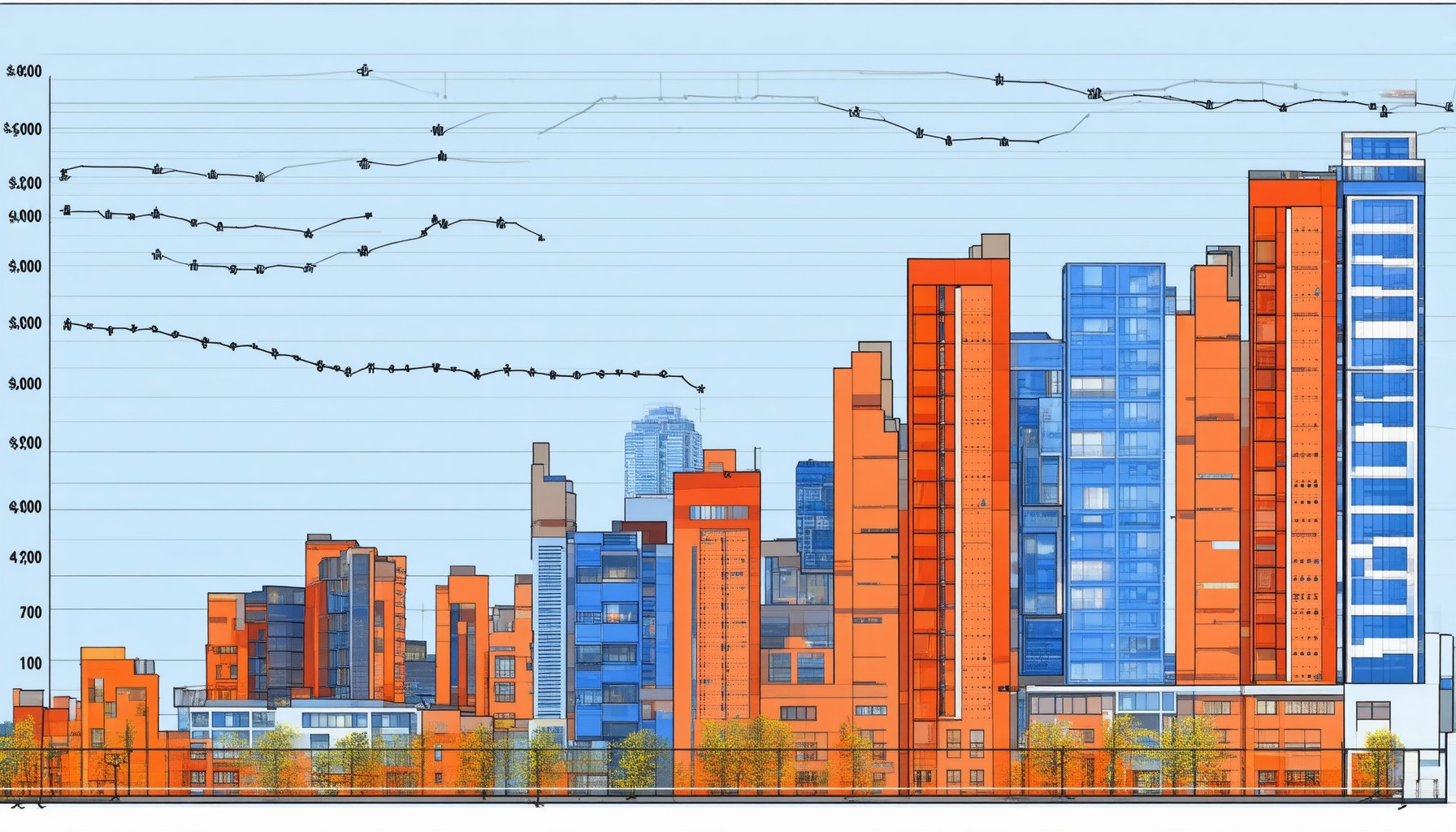The rental property market continues to evolve rapidly, offering both challenges and opportunities for investors. As we approach 2023, understanding where rental prices are rising most significantly can help both new and seasoned investors make informed decisions. This comprehensive guide explores the latest trends, strategies, and insights into the rental market locations shaping the year ahead. From identifying cities with the highest rent growth to evaluating which states offer the best returns on investment, this article delves into the key factors driving the rental market in 2023. Whether you’re looking to enter the rental property market or optimize your current portfolio, this guide provides actionable insights and expert analysis to navigate the evolving landscape successfully.
Key Takeaways
- Top Rental Markets: Miami, Chicago, San Francisco, New York City, and Southern California dominate the rental market due to strong job markets, affordability, innovation, cultural appeal, and diverse housing options.
- States with High ROI: Texas, Florida, Alabama, Missouri, Georgia, Kentucky, Indiana, South Carolina, Idaho, Colorado, and Arizona are top choices for investors, driven by job growth, affordability, and favorable laws.
- Highest Rental Yields: Cities like Austin, Orlando, Nashville, and Charlotte offer high returns due to strong job markets, affordable property prices, and population growth.
- Explore detailed insights and resources on rental markets and investment opportunities by visiting Real Estate Locations.

What is the 50% Rule in Rental Property?
The 50% rule, also known as the 50/50 rule, is a fundamental guideline used by real estate investors to evaluate the profitability of rental properties. Here’s a breakdown of the rule and how it applies:
Definition of the 50% Rule
The 50% rule states that no more than 50% of the gross rental income generated by a property should be allocated to operating expenses. This includes costs like utilities, maintenance, taxes, insurance, and management fees. The remaining 50% should be considered as profit.
Why the 50% Rule Matters
This rule is crucial for investors because it helps prevent overestimation of profits and underestimation of expenses. By ensuring that at least half of the income is reserved for expenses, investors can make more informed decisions about whether a property is generating a viable return.
How to Apply the 50% Rule
To implement the 50% rule: 1. Calculate the total monthly rental income. 2. Determine all operating expenses, including utilities, taxes, insurance, and maintenance. 3. Ensure that operating expenses do not exceed 50% of the gross rental income. 4. If expenses exceed 50%, consider increasing the rent or evaluating the property’s potential.
Example Scenario
Suppose a rental property generates $2,000 in gross monthly rental income. According to the 50% rule: – Maximum allowable operating expenses = $1,000. – Profit = $1,000.
If actual expenses are $1,200, the property does not meet the 50% rule, indicating it may not be a profitable investment.
Considerations
- The 50% rule is a general guideline and may vary based on property type, location, and market conditions.
- Investors should always consult with a financial advisor or tax professional to tailor their approach to individual circumstances.
By adhering to the 50% rule, investors can make more informed decisions about their rental properties and achieve long-term success in real estate investing.
Where Are Rents Increasing the Most?
Rent prices have been rising steadily across many regions of the United States, with certain areas experiencing more significant spikes than others. According to recent data analysis, several states have seen notable rent increases over the past few years.
- New York has consistently ranked among the top states with significant rent growth, particularly in major cities like New York City and Brooklyn.
- New Mexico has experienced a notable spike, with cities like Albuquerque seeing rent increases of over 50% since 2019.
- Tennessee has also seen substantial growth, especially in urban centers like Nashville, where rent prices have risen by nearly 60%.
- Georgia has been another area with notable rent increases, particularly in Atlanta, where prices have grown by approximately 65%.
- Maryland has also been impacted significantly, with cities like Baltimore and Bethesda witnessing rent hikes of around 62%.
- Azizona tops the list with the highest rent increase, with Phoenix leading the way at an impressive 67% rise since 2019.
The overall trend indicates that rental prices are being driven by factors such as job market growth, population expansion, and limited housing supply in these regions. To learn more about specific neighborhoods and market trends, visit our Real Estate Locations resource hub, which offers detailed guides and tools for renters and investors.

How Many Rental Properties Are Needed to Earn $5,000 Monthly?
To determine how many rental properties are needed to generate $5,000 monthly, we’ll use two key rules: the 1% rule and the 50% rule.
- 1% Rule : This rule states that rental income should be 1% of the property’s purchase price. For example, if a property costs $200,000, the target monthly rent would be $2,000.
- 50% Rule : After calculating rent, subtract all expenses (property management fees, taxes, insurance, maintenance, etc.) to ensure the remaining profit is at least 50% of the rent.
Calculations :- Assume each property costs $200,000.- Rent based on the 1% rule: $2,000/month.- Profit after expenses (50% rule): $1,000/month per property.
To reach $5,000/month: – Number of properties needed: 5.
Considerations :- Property prices may have increased, potentially reducing the number of properties needed.- Location affects both property costs and rent rates.- Efficient property management is crucial for scalability.
Thus, typically, five rental properties are needed to achieve approximately $5,000 monthly income, considering the 1% and 50% rules. Adjustments may be necessary based on local market conditions and management capabilities.

Where is the Hottest Rental Market in the US?
As of July 2025, the hottest rental market in the US continues to be dominated by select urban and suburban areas, driven by strong job markets, population growth, and limited housing supply. Among these, Miami, Florida, stands out as the most competitive rental market, further solidifying its position due to its growing appeal and year-round demand from both domestic and international buyers.
Key Competitors and Rivals:
- Suburban Chicago, Illinois
Suburban areas around Chicago, particularly those in Cook County, remain a close rival to Miami. These neighborhoods offer a mix of affordability compared to downtown Chicago, while still benefiting from the city’s robust job market in sectors like finance, technology, and healthcare. - San Francisco, California
Despite its high cost of living, San Francisco continues to attract renters due to its innovative economy and cultural appeal. However, the market has shown signs of stabilization after years of rapid growth. - New York City, New York
New York City remains a strong contender, particularly in boroughs like Brooklyn and Manhattan, where demand for rental properties persists despite rising prices. - Southern California
Cities like Los Angeles and San Diego in Southern California also compete strongly, offering a variety of housing options and access to outdoor activities, though the market has become more balanced recently.
Market Trends:
The rental market in these areas is influenced by several factors, including job availability, housing supply, and economic conditions. Cities with high demand and limited inventory tend to see higher rents, making them attractive for investors and renters alike.
For more detailed insights and updated market trends, visit Real Estate Locations to explore our comprehensive resources and expert analysis on rental markets across the US.
States with Highest ROI on Rental Properties
The following states are notable for offering high returns on investment (ROI) through rental properties:
- Texas : Known for its large rental market and competitive pricing, Texas attracts investors due to its strong economic growth and lower cost of living.
- Florida : Warm weather and a growing tourism industry boost rental demand, particularly in popular coastal areas.
- Alabama : Offers lower property prices and favorable landlord-friendly laws, making it a cost-effective choice for investors.
- Missouri : Affordable entry points combined with steady demand in cities like Kansas City and St. Louis.
- Georgia : Benefits from a booming economy and high demand in urban centers like Atlanta.
- Kentucky : Lower property taxes and strong rental demand in cities like Louisville.
- Indiana : A robust rental market with attractive yields in cities such as Indianapolis.
- South Carolina : Growing interest in areas like Charleston and Columbia due to rising demand.
- Idaho : Strong growth potential in cities like Boise, supported by a thriving local economy.
- Colorado : High demand in Denver and Aurora driven by population growth and outdoor lifestyle appeal.
- Arizona : Consistently strong rental demand, particularly in Phoenix and Tucson.
For more detailed insights and resources on selecting the best rental property locations, visit our Real Estate Locations guide.

Which U.S. City Has the Highest Rental Yield?
Rental yield, often measured as annual rent divided by property price, is a crucial metric for real estate investors. Higher yields indicate better returns. Several U.S. cities stand out for their high rental yields, driven by strong job markets, population growth, and affordable property prices.
Top Cities with High Rental Yields
- Austin, TX
- Known for its booming tech industry and growing population, Austin offers a high rental yield. The city’s demand for housing has been fueled by corporate expansions and remote work trends, making it a prime location for investors.
- Orlando, FL
- A popular tourist destination, Orlando attracts many residents due to its theme parks and warm climate. With moderate property prices and rising demand for rentals, Orlando boasts a competitive rental yield.
- Nashville, TN
- Nashville’s rapid growth, driven by healthcare and music industries, has increased housing demand. Its balance of affordable properties and high rents makes it a favorable market for investors.
- Charlotte, NC
- Charlotte’s financial sector and corporate relocations have spurred housing demand. The city’s mix of affordable homes and high rents contributes to a strong rental yield.
Why These Cities?
These cities excel due to:
– Job Market Strength : Thriving industries attract residents, boosting demand for rentals.
– Property Price Affordability : Lower property costs compared to expensive coastal cities.
– Population Growth : Rising numbers of residents create higher demand for housing.
Conclusion
If you’re seeking high rental yields, consider cities like Austin, Orlando, Nashville, or Charlotte. Their unique combinations of economic growth and housing market dynamics make them top choices for investors looking for strong returns.




0 Comments